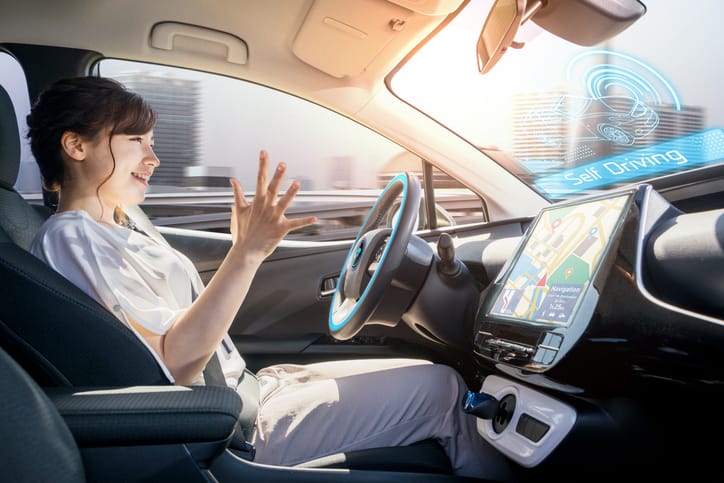The Future of Head-Up Displays: Comparing Different Technologies

Head-Up Displays (HUDs) have graduated from science fiction to a coveted car feature. These transparent displays project vital information like speed, navigation, and warnings directly onto the windshield, keeping a driver's eyes focused on the road. But HUD technology is rapidly evolving, promising a more immersive and informative driving experience. Let's delve into the current state of HUDs, explore emerging technologies, and see how they're shaping the future of in-car displays.
The Present: Windshield Wonderlands
Most cars today use Windshield Combiner HUDs. These project a 2D image onto a partially reflective combiner, a transparent panel near the base of the windshield. The image appears to float above the hood, keeping the driver's gaze centered.
Here's a breakdown of the technology behind these common HUDs:
- Projector: Traditionally, a Light Emitting Diode (LED) projector is used for its compact size and energy efficiency. Newer systems might use lasers for a brighter and more compact projection unit.
- Combiner: This crucial component can be plastic or glass. It reflects the projected image partially while allowing the driver to see through it clearly.
Many car manufacturers offer Windshield Combiner HUDs, including:
- Mercedes-Benz: Their HUD displays speed, navigation arrows, and even highlights detected pedestrians.
- Toyota: The latest Toyota Camry offers a basic HUD with speed and turn-by-turn directions.
Limitations and Looking Beyond
While Windshield Combiner HUDs offer a clear benefit, they have limitations:
- Limited Information: The projected image is typically small, restricting the amount of information displayed.
- Focus Issues: The fixed image distance can cause some drivers to experience eye strain.
- Bulk and Cost: The projector and combiner assembly can be bulky and add to the car's cost.
These limitations pave the way for the next generation of HUDs.
The Future: A More Immersive Experience
Augmented Reality (AR) HUDs are poised to transform the in-car display landscape. Here's how they differ from current technology:
- AR Overlay: Instead of a simple projection, AR HUDs superimpose information onto the real world through the windshield. Imagine seeing a navigation arrow superimposed on the actual road you're about to turn on.
- Depth Perception: Advanced AR HUDs might even use stereoscopic displays or holographic projections to create a 3D image, enhancing depth perception and making information appear more natural.
The Technologies Shaping AR HUDs:
Several technologies are vying to be the driving force (pun intended) behind AR HUDs:
- Digital Micromirror Devices (DMD): This technology, used in projectors like Texas Instruments' DLP chips, can create a high-resolution, 3D image.
- Laser Beam Scanning (LBS): Here, rapidly scanning lasers create a full-color image directly onto the windshield. This method offers a wider field of view but can be expensive.
- Waveguide HUDs: These employ a special transparent waveguide to project the image onto the driver's line of sight. This approach is compact and offers a wide field of view but might have limitations in displaying complex information.
Examples: While AR HUDs are still under development, some carmakers are showcasing prototypes:
- Garmin AR HUD: This aftermarket solution projects turn-by-turn navigation arrows directly onto the road ahead.
- Continental AR Navigation System: This concept HUD uses waveguide technology to display navigation information and even highlights pedestrians.
Beyond Navigation: A Window of Possibilities
AR HUDs hold the potential to revolutionize how we interact with our cars:
- Advanced Driver-Assistance Systems (ADAS): Imagine seeing warnings about potential hazards like blind-spot vehicles or upcoming lane closures projected directly onto the road.
- Night Vision Enhancement: AR HUDs could overlay thermal imaging onto the windshield, improving visibility in low-light conditions.
- Personalized Information: The system could display customized information relevant to the driver, like upcoming appointments or points of interest.
Challenges and the Road Ahead
While AR HUDs are exciting, they face some hurdles:
- Technical Challenges: Creating high-resolution, 3D projections with minimal eye strain requires further technological advancements.
- Cost and Regulations: The complex technology might make AR HUDs expensive initially. Additionally, safety regulations regarding driver distraction need to be addressed.
Conclusion: A Heads-Up Look at the Future
Head-up displays are no longer a futuristic gimmick. They are a valuable safety feature and are poised to become even more sophisticated with AR technology. The future holds the promise of a seamless integration of information and the driving experience. AR HUDs will likely evolve alongside advancements in autonomous vehicles. Imagine a car that displays not just navigation but also highlights the optimal path based on traffic conditions or suggests alternative routes in real-time.
Who will be the frontrunners in this technological race? Tech giants like Google and Apple are heavily invested in AR development, and their involvement in the automotive industry could accelerate HUD innovation. Car manufacturers are also forging partnerships with technology companies to create next-generation in-car displays.
Ultimately, the future of HUDs hinges on creating a safe and user-friendly experience. Striking a balance between providing relevant information and minimizing driver distraction will be crucial. As technology progresses and regulations adapt, AR HUDs have the potential to transform our cars into intelligent companions, making driving safer, more efficient, and perhaps even a little more enjoyable.
